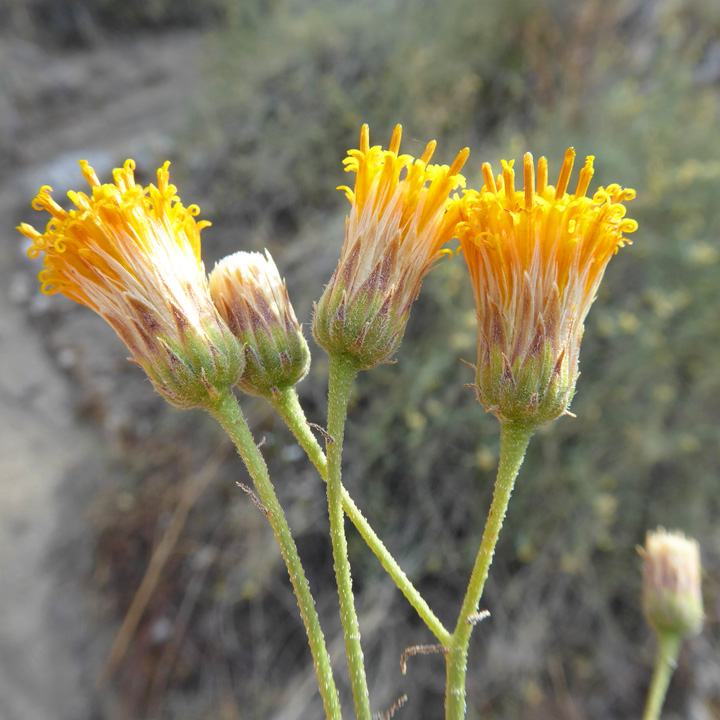
|
Family: Asteraceae |
Subshrubs or shrubs, 50-140[-300] cm (often forming dense, rounded masses). Stems erect or spreading (glabrous or rough hairy [sparsely hirsute]). Leaves cauline; opposite (all or proximal) or alternate; sessile [petiolate]; blades linear to narrowly elliptic [± deltate, often hastate], sometimes lobed, ultimate margins entire [dentate], faces glabrous or ± scabrous [sparsely hirsute], sometimes gland-dotted or stipitate-glandular. Heads usually discoid (sometimes ± disciform), borne singly or in corymbiform arrays. Involucres ± campanulate or broader, 5-15 mm diam. Phyllaries persistent, 15-30[-40+] in 3-5 series (ovate or elliptic to lanceolate or lance-linear, strongly unequal; outer herbaceous, margins often chartaceous, ciliate, abaxial faces pubescent; inner more chartaceous, striate, margins ciliate, abaxial faces less pubescent to glabrate). Receptacles convex, paleate (paleae persistent, lanceolate to linear-lanceolate or linear-elliptic, conduplicate, each ± clasping a cypsela, scarious, striate, margins ciliate, abaxial faces glabrous or glabrate). Ray florets 0. Disc florets usually 20-50, bisexual, fertile (sometimes 2-8+ peripheral florets lack anthers); corollas yellow to orange, tubes shorter than narrowly funnelform throats, lobes 5, deltate. Cypselae ± compressed, ± obpyramidal, ± 3-angled, sericeous to strigillose; pappi of 15-25+ plumose, setiform scales in 1 series. x = 9. |
This project was made possible in part by the Institute of Museum and Library Services [MG-70-19-0057-19].
Powered by Symbiota



